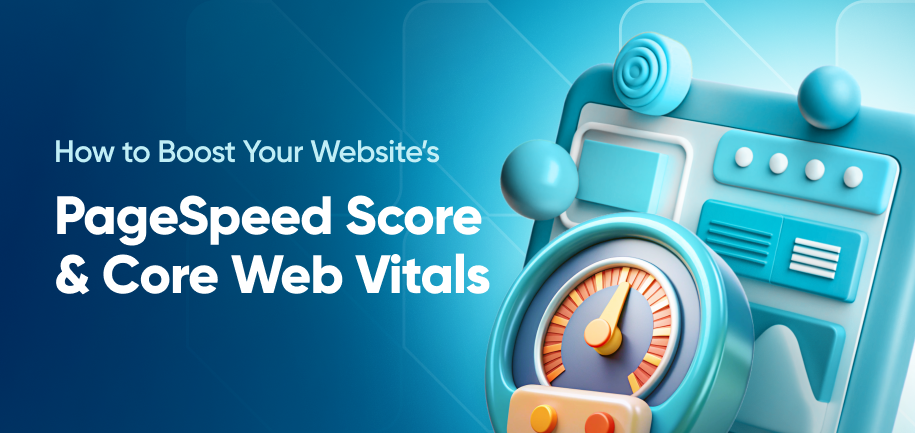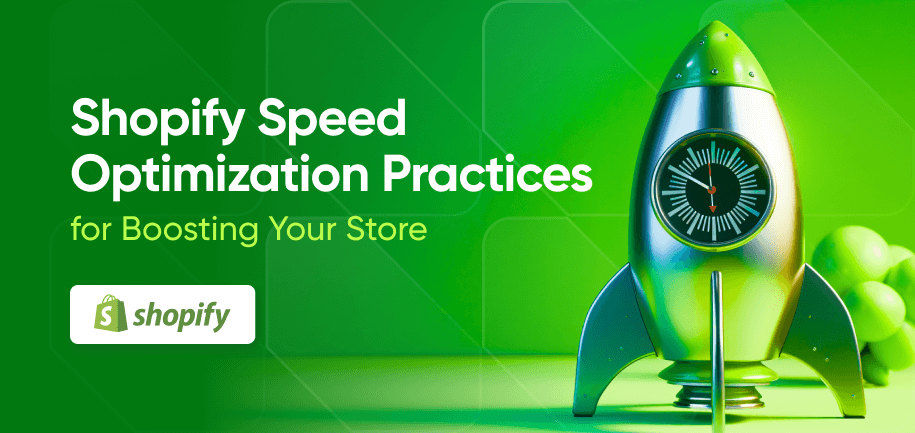Conversions are directly impacted by page loading times. In fact, almost 70% of consumers say that slow page load times affect their willingness to buy from an online retailer. And – you guessed it – the longer the loading time, the lower your chances of gaining a new customer.
To help slow-loading websites reduce bounce rates, improve customer satisfaction, and boost conversions, Google provides free access to Google PageSpeed Insights and Core Web Vitals. Although different, these tools are interconnected and help website owners measure, analyze, and improve their site's performance.
This article will cover Google PageSpeed optimization tips and best practices for improving Core Web Vitals. For Magento users, we’ll also explain how the Google PageSpeed Optimizer tool can help boost both metrics efficiently.
What Is Google PageSpeed Insights?
Google PageSpeed Insights is a tool that evaluates a website's performance and offers optimization recommendations. It generates a performance score ranging from 0 to 100, based on factors affecting page load speed and overall user experience. A higher score indicates better optimization, leading to:
- Better Search Engine Rankings – Google uses page speed as a ranking factor, so faster sites have a competitive edge in search results.
- Higher Conversion Rates – Users are more likely to complete purchases when a site loads quickly and responds smoothly.
- Improved User Experience – Faster-loading pages reduce bounce rates and increase engagement.
Google PageSpeed Insights categorizes pages into three performance ranges:
- Good (80-100) – Highly optimized, quick-loading pages that follow best practices. Sites in this range typically achieve high conversion rates.
- Medium (60-79) – Moderately optimized pages that load fairly quickly but have issues, such as unoptimized images, excessive code, or render-blocking resources. Conversion rates can vary based on the severity of these issues.
- Low (0-59) – Poorly optimized pages with multiple areas needing improvement. Slow load times often lead to low conversion rates.
What Is a Good Google PageSpeed Score?
A good PageSpeed score ranges from 80 to 100, signifying that a page is well-optimized, loads efficiently, and offers a smooth user experience. Pages in this range tend to have lower bounce rates and higher conversion rates.
What Are Core Web Vitals?
Core Web Vitals are a set of performance metrics and part of the PageSpeed score. While the PageSpeed score measures a website's overall performance, Core Web Vitals are key metrics within this broader assessment.
Core Web Vitals contribute to the user experience section of the PageSpeed score, including loading speed, interactivity, and visual stability. These elements are a major factor in determining how well a website performs in Google PageSpeed Insights.
The three most important metrics within core web vitals are:
- Largest Contentful Paint (LCP) – LCP measures how long it takes for the largest visible element (e.g., a key image or banner) to fully render on the page. Google recommends an LCP time of 2.5 seconds or less for a good user experience.
- Interaction to Next Paint (INP) – INP measures the time it takes for the page to visually respond to a user’s interaction, such as clicking a button or opening a menu. A good INP score should be under 200 milliseconds to provide a seamless experience.
- Cumulative Layout Shift (CLS) – CLS measures how much a page’s content shifts unexpectedly while loading. A good CLS score should be below 0.1 to avoid disrupting the user experience.
Improving Core Web Vitals – loading performance, interactivity, and visual stability – is a key part of working towards a higher PageSpeed Insights Score.
Read More: Amasty’s Webinar Insights on Core Web Vitals
Improving Core Web Vitals – loading performance, interactivity, and visual stability – is a key part of working towards a higher PageSpeed Insights Score.
Best Practices for Increasing PageSpeed Score and Improving Core Web Vitals
While every website has unique performance challenges, Core Web Vitals and PageSpeed Insights have well-defined criteria. This makes it easier to implement proven strategies that effectively enhance these metrics.
1. Optimize Images and Media Files
Large, unoptimized images can slow down your site. Reducing file sizes while maintaining quality ensures faster load times. To achieve this:
- Use Next-Gen Formats – Convert images to WebP or AVIF for reduced file sizes without sacrificing quality.
- Enable Lazy Loading and Preloading – Load images only when they enter the viewport and prioritize important visuals like hero banners and product images (positively impacts LCP).
- Prevent Visual Shifts – Predefine image dimensions and use font preloading to improve CLS scores.
2. Minify and Defer JavaScript and CSS
Excessive JavaScript and CSS can delay rendering. Optimizing these files enhances page speed and interactivity, so you should:
- Reduce or Minify CSS and JavaScript – Remove unnecessary characters, spaces, and comments to decrease file sizes (benefits INP).
- Defer Non-Essential Scripts – Load JavaScript asynchronously to prevent render-blocking.
- Move Render-Blocking Resources – Ensure critical CSS loads early while deferring non-essential stylesheets.
3. Leverage Caching and Content Delivery Networks (CDNs)
Efficient caching reduces load times by serving content faster to users across different locations. Consider:
- Enabling Full-Page Caching – Store static versions of pages for quicker delivery.
- Using a CDN – Distribute content globally to minimize latency and speed up access.
- Implementing Browser Caching – Store frequently used resources locally to improve repeat visit performance.
4. Reduce Server Response Time
A slow server can bottleneck your site's performance. Streamline your backend processes by following these steps:
- Optimize Database Queries – Index and clean up redundant queries to improve response times.
- Use a Lightweight Theme – Avoid heavy themes that introduce excessive code bloat.
- Upgrade Hosting Solutions – Choose a high-performance hosting provider optimized for your platform.
Read More: Website Speed Optimization Guide
How Google Page Speed Optimizer Improves PageSpeed Score and Magento Core Web Vitals
Magento’s flexibility and feature-rich nature come at a cost – performance optimization is often challenging due to heavy scripts, large images, and complex third-party integrations. The Google Page Speed Optimizer by Amasty is designed to address these issues.
The tool helps store owners improve their Google PageSpeed Insights score by introducing the following functionality:
- Reduce Server Response Time – Optimizes Time to First Byte (TTFB) with Full Page Cache Warmer and efficient resource prioritization.
- Eliminate Render-Blocking Resources – Moves JavaScript to the bottom of the page, executes scripts asynchronously, and merges/minifies CSS/JS for faster rendering.
- Enhance Image Optimization – Converts images to WebP/AVIF, enables lazy loading, and compresses files without quality loss.
- Implement Advanced Caching – Supports Back-Forward Cache for faster navigation and preloads key assets like critical fonts and images.
Read More: Full Guide to Magento Caching
Apart from this, Google Page Speed Optimizer also helps achieve better Magento Core Web Vitals scores, which directly impact Google’s performance evaluation. Here’s how it affects each of the three key metrics:
Optimizing Largest Contentful Paint (LCP)
To ensure that the largest visible element on the page loads quickly, the module provides:
- Preload for critical images – Ensures that key images (e.g., banners, product images) load immediately instead of being lazy-loaded.
- CSS and JavaScript optimization – Minifies and merges CSS files while moving JavaScript to the bottom of the page to eliminate render-blocking issues.
- Resource prioritization – Uses Preload URLs to load critical assets (such as hero images) as early as possible.
Enhancing Interaction to Next Paint (INP)
Although INP is largely dependent on site structure and interactive elements, the module offers:
- JavaScript optimization – Reduces script size and execution time for faster response to user actions.
- Lazy loading – Defers non-essential content to free up resources for interactive elements.
- Script prioritization – Assigns high priority to key scripts that impact interactivity.
Reducing Cumulative Layout Shift (CLS)
To prevent layout shifts that can disrupt the user experience, the module includes:
- Aspect ratio settings for images – Reserves proper space for images to prevent unexpected content shifts.
- Font preloading – Ensures critical fonts load early, avoiding layout changes when text styles update.
- Back-forward cache compatibility – Stores page states for quicker reloads and smoother navigation.
As it addresses all the factors that affect both PageSpeed Score and Core Web Vitals, the Google PageSpeed Optimizer helps Magento merchants refine every aspect of their store’s performance, ensuring it runs at peak efficiency.
Read More: Setting Up Varnish in Magento 2
Summing Up:
Page speed is essential for SEO, conversion rates, and user experience, with PageSpeed Insights and Core Web Vitals serving as key evaluation tools. To achieve higher scores, focus on four core optimizations: image compression, JS/CSS minification, caching, and server response time reduction.
For Magento users, Google PageSpeed Optimizer streamlines these improvements with:
- All-around Core Web Vitals enhancements.
- JavaScript & CSS optimization to eliminate render-blocking issues.
- Image compression & WebP/AVIF support
- Caching & preloading to speed up responses.
Looking for expert help? Get a free Magento performance audit from Amasty and decide if our experts should fine-tune your store for maximum speed and efficiency.






















